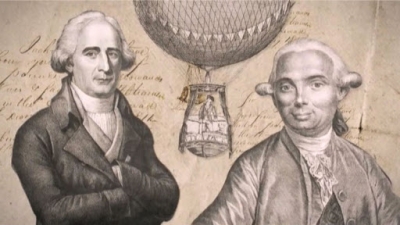
It was invented by two brothers Joseph-Michel and Jacques-Etienne Montgolfier of France.
In the 18th century the Portuguese Jesuit priest Bartolomeu de Gusmão envisioned an aerial apparatus called Passarola, which was the predecessor of the hot-air balloon. The purpose of Passarola was to serve as air vessel in order to facilitate communication and as a strategical device. In 1709 John V of Portugal decided to fund Bartolomeu de Gusmão’s project following a petition made by the Jesuit priest, and an unmanned demonstration was performed at Casa da India in presence of John V, the queen Maria Anna of Austria, having as witnesses the Italian cardinal Michelangelo Conti, two members of the Portuguese Royal Academy of History, one Portuguese diplomat and one chronicler. This event would bring some European attention to this event and this project. A later article dated on October 20, 1786 by the London Daily Universal Register would state that the inventor was able to raise himself by the use of his prototype. Also in 1709, the Portuguese Jesuit wrote Manifesto summário para os que ignoram poderse navegar pelo elemento do ar (Short Manifesto for those who are unaware that is possible to sail through the element air); he also left designs for a manned air vessel.
The notable balloonist Julian Nott, in the 1970s; hypothesized that two millennia ago, the Nazca Lines geoglyphs’ creation could have been guided by Nazca leaders in a balloon, possibly the earliest hot-air balloon flights in human history. In 1975 to support this theory, he designed and piloted the Nazca Prehistoric Balloon, using only methods and materials available to the Pre-Inca Peruvians 1,000 years ago.
Picture Credit : Google




